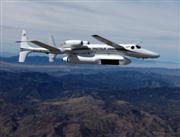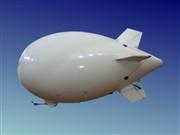হোম > Airborne Internet for Ubiquitous Data Solution
লেখক পরিচিতি
লেখকের নাম:
ঈদাত অপূর্বা সিংহা
মোট লেখা:৯
লেখা সম্পর্কিত
পাবলিশ:
২০০৯ - মার্চ
তথ্যসূত্র:
কমপিউটার জগৎ
লেখার ধরণ:
ইনটারনেট
তথ্যসূত্র:
ইংরেজি সেকশন
ভাষা:
বাংলা
স্বত্ত্ব:
কমপিউটার জগৎ
Airborne Internet for Ubiquitous Data Solution
Nowadays we frequently come across different internet access technologies such as DSL, cable modem, GPRS/EDGE, satellite internet etc. Among these satellites internet captured our little attention due to its operational tactics and service delivery mechanism. As the name implies, satellite internet requires a satellite that receives signals from the ground station and then beam this signal to the multiple subscribers. Satellite internet is an expensive internet solution and at the same time data transmission in this process faces delay due to high altitude.

Addressing this phenomenon the concept of airborne internet came in limelight. The airborne internet functions much like satellite-based internet access, but without the time delay. Airborne internet provides same chunk of bandwidth as satellite internet but it will take less time to relay data because it is not as high up. Satellites orbit at several hundreds of miles above Earth. The airborne-internet aircraft will circle overhead at an altitude of 52,000 to 69,000 feet (15,849 to 21,031 meters). At this altitude, the aircraft will be undisturbed by inclement weather and flying well above commercial air traffic.

Currently three companies such as Angel Technologies, Aero Vironment and Sky Station International are the key players to introduce high-speed wireless internet through airborne internet technology. Angel Technologies has developed an airborne internet network, called High Altitude Long Operation (HALO), which would use lightweight planes to circle overhead and provide data delivery faster than a T1 line for businesses. Consumers would get a connection comparable to DSL. Also, Aero Vironment has teamed up with NASA on a solar-powered, unmanned plane that would work like the HALO network, and Sky Station International is planning a similar venture using blimps instead of planes.

Unlike satellite an aircraft can be deployed easily that in practice ensure significant cost advantage over satellite based service. However, the airborne internet will actually be used to compliment the satellite and ground-based networks, not substitute them. These airborne networks will overcome the last-mile barriers facing conventional internet access options. In the remote places where no cable connection is available airborne internet can provide easy and cheap internet solution to the mass. It would take a lot of time to provide universal access using cable or phone lines, just because of the time it takes to install the wires. An airborne network will immediately overcome the last mile as soon as the aircraft takes off.
The most important part of airborne internet operation is the ground station. Role of this station is crucial to calibrate aircraft’s position and spread the service to the exact location. The consumers will have to install an antenna on their home or business in order to receive signals from the network hub overhead. The networks will also work with established Internet Service Providers (ISPs), who will provide their high-capacity terminals for use by the network. These ISPs have a fiber point of presence -- their fiber optics are already set up. What the airborne internet will do is provide an infrastructure that can reach areas that don't have broadband cables and wires.
Angel Technologies in its HALO Network operates Proteus plane to provide the internet service. At the heart of Angel's Proteus planes is the one-ton airborne-network hub, which is what allows the plane to relay data signals from ground stations to your workplace and home computer. The airborne-network hub consists of an antenna array and electronics for wireless communication. The antenna array creates hundreds of virtual cells, like mobile-phone cells, on the ground to serve thousands of users. The payload is liquid-cooled and operates off of about 20 kilowatts of DC power. An 18-foot dish underneath the plane is responsible for reflecting high-speed data signals from a ground station to your computer.
Sky Station International is trying to outshine the technological breakthrough of Angel Technologies. This company envisions of deploying blimps over at least 250 cities worldwide, one over each city. Each station would fly at an altitude of 13 miles (21 km) and provide wireless service to an area of approximately 7,500 square miles (19,000 square km). Each station equipped with heavy telecommunication devices and fly at an altitude of 13 miles (21 km) and provide wireless service to an area of approximately 7,500 square miles (19,000 square km). Sky Station says that its user terminals will enable broadband connections of between 2 and 10 megabits per second (Mbps).
NASA and AeroVironment are working on a solar-powered, lightweight plane name Helios that could fly over a city for six months or more, at 60,000 feet, without landing. AeroVironment plans to use these unmanned planes as the carrier to provide broadband internet access.
Helios still remains at the nascent stage and needs more technological advancement to run full fledge internet service. The all-wing plane is divided into six sections, each 41 ft (12.5 m) long. A pod carrying the landing gear is attached under the wing portion of each section. These pods also house the batteries, flight-control computers and data instrumentation. Network hubs for AeroVironment's telecommunications system would likely be placed here as well.
CJ Web
ফিডব্যাক : edward.singha@gmail.com
লেখাটি পিডিএফ ফর্মেটে ডাউনলোড করুন
পাঠকের মন্তব্য


